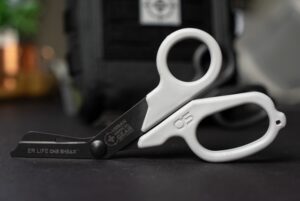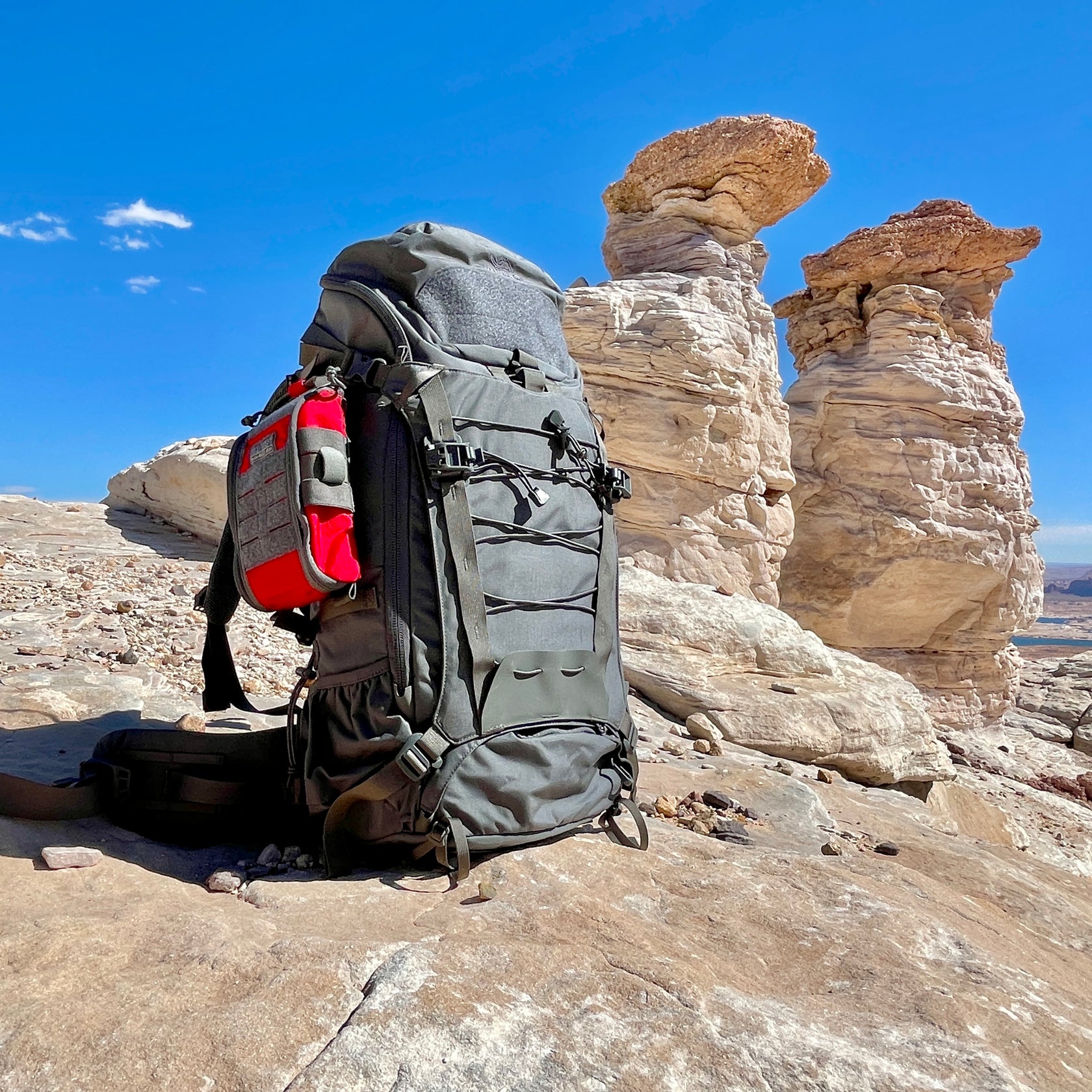Life-saving gear designed to combat preventable death at point of injury.
*It is highly recommended that you obtain quality medical training from credible sources prior to carrying an IFAK. This post is written with the assumption that you understand and have been trained in treatment of penetrating trauma injuries.
In this article, I'll do my best to guide you towards a few evidence based and proven options that are designed as primary solutions to serious problems. What you do with this information is ultimately up to you.
I'll quickly mention that true trauma kits and trauma kit components aren't exactly "cheap" in comparison to that plastic box first aid kit you picked up at the hardware store. Serious injuries requires serious tools. Be cautious of items priced well below market value online. It's not a guarantee, but they usually are fake or expired. Purchase from credible sources.
The trauma kit and component market has definitely expanded in recent years. Some of these products are innovative and worth the investment, others fall more into the "gimmick" bucket. For the sake of time, I'll cover just the essentials here that are commonly agreed upon as the true "meat and potatoes" of a solid IFAK.
https://www.urbanmedicalgear.com/collections/stocked-kits

When it comes to selecting a well thought-out IFAK inventory, it is wise to select gear following the M.A.R.C.H treatment algorithm.
- M- Massive Hemorrhaging
- A- Airway
- R- Respirations
- C- Circulation
- H- Hypothermia/Head Injuries
Massive Hemorrhaging
Following the list above, every IFAK should be based around a CoTCCC approved tourniquet, (preferably two or even more depending on environment.) With recent additions to the CoTCCC recommended device list in 2019, several quality options are available. The CAT Gen-7 from North American Rescue is a preferred tourniquet in most settings due to it's familiarity among a wide base and ease of use. The CAT Gen-7 also allows for simple one-handed application and is considered the "standard" in many places due to it's track record of success in the U.S. Military.
Another popular choice is the SOF Tactical Tourniquet-Wide (SOFTT-W) for it's pure ruggedness and proven effectiveness for years in the military and police world.
SOFTT-W Gen-4 from TacMed Solutions
Pro-tip: purchase one tourniquet as a "trainer" and only use it for training as to not wear out your staged tourniquets intended for real-world application.
CAT Gen-7 from North American Rescue

Pressure Bandages
We know that every injury may not need a tourniquet, and if so we will need something to hold pressure on the wound. Keeping an elastic wrap or vacuum sealed emergency trauma dressing in your IFAK will really assist with this. With the goal of applying firm pressure, we recommend that you choose a bandage that can handle the tension and shy away from "generic stretch gauze" for this role.
Mini Responder 4" ETD from North American Rescue

For injuries in the junctional areas, wound packing gauze is essential. This takes us back to the CoTCCC recommended device list, which highlights several products. The most common and trusted among the group will usually be QuikClot Combat Gauze from Z-Medica. QuikClot Combat Gauze is a proven hemostatic gauze designed to effectively stop bleeding rapidly in conjunction with applied pressure. Another common choice is Celox Rapid from Combat Medical. Both are proven to be effective, however; a recent study showed Combat Gauze to hold a slight advantage in performance.
https://www.ncbi.nlm.nih.gov/pubmed/31441025
Having hemostatic gauze is great, but standard wound packing gauze with proper wound-packing technique is proven to be an effective method of stopping major bleeding as well. Standard S-rolled gauze packs (from companies like North American Rescue) are typically only a few dollars each compared to the approximate $40 or more commonly spent on hemostatic gauze packs. Regardless of the route you take here, make wound packing gauze a priority item in your IFAK.
Bonus: Ignore your best friends uncle, tampons don't belong in a trauma kit.

Wound Access
It is always a great idea to carry trauma shears with your IFAK. Accessing a wound may difficult due to whatever your patient is wearing clothes wise. Being able to physically see the wound is very important and can be achieved by using a pair of trauma shears. Picking up a cheap pair will usually do the trick, but investing in a premium option will really make the task easier. Some premium options are; the Leatherman Raptors, ER Life One Shear, and XShear.

Airway Management
Stepping away from bleeding control, the next in order is the airway. When it comes to airway adjuncts and your IFAK, the answer will almost always be a Nasal Pharyngeal Airway (NPA). The most common adult size is the 28F, and that is what a majority of folks will ultimately carry. When it comes to brand and type, there a few options, but the most popular and respected is the Rusch Latex-Free Robertazzi. A new, "pre-lubricated" option on the market from Combat Medical is another great option.
Pre-lubricated NPA from Combat Medical

Respirations
After airway, our focus is on respirations. Essentially, the best tool(s) for your IFAK in relation to respirations, is going to be a set of vented chest seals. When it comes to chest seals, vented is going to be the best option. There are several great options on the market such as the Hyfin Vent chest seal from North American Rescue or SAM Medical chest seal. Remember, carry two chest seals in your IFAK so that you have one for an entry wound and one for an exit wound.
Hyfin Vent Chest Seals

*A commercial grade chest decompression needle (or two) may be an appropriate addition to your IFAK based on training and licensing. For those in this category, check out the ARS or SPEAR from North American Rescue.
Circulation/Hypothermia
When it comes to Circulation and Hypothermia/Head Injuries, the items you can actually fit in an IFAK that are useful will be limited. If space permits, it is a good idea to keep a rescue mylar blanket to help retain body heat after an injury. Data on how effective using a mylar blanket for this use is limited and plan on other means of warming someone after injury.
The items above are truly the essentials of your IFAK, but a few small additions can be made to really complete the package.
"Bonus Items" that you should consider adding.
-
Nitrile Gloves (protect yourself)
-
Fine Point Marker (time of tourniquet application)
-
CPR Face Shield
Many neglect the importance of carrying medical and knowing how to treat life-threatening injuries. Hopefully the information provided will motivate you to invest in the right training, and the right supplies.






Comments
I really appreciate this useful guide, it’s definitely information I will reference and share with others. Thanks again Nolan!